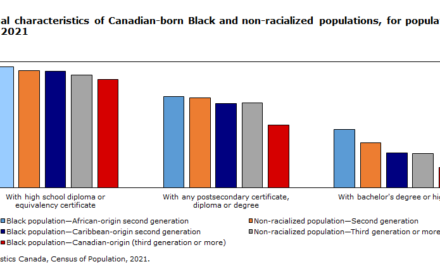Inflation is hurting health care affordability: ©Pixelrobot – stock.adobe.com

American families will soon face a large increase in health care costs driven by medical inflation combined with companies increasingly moving employees to higher deductibles and out of pocket plan designs. Health care insurance costs are expected to leap from 5.4% to 8.5% in 2024 due to medical inflation. Skyrocketing out-of-pocket (OOP) healthcare costs and unexpected medical expenses are outpacing inflationary pressures which have already decimated the budgets of many American families.
Left unchecked, inflation will cause Americans on tight budgets to make difficult choices, often resulting in patients having to avoid or delay care – exacerbating an already widening gap in health equity for vulnerable populations. Further, 43% of Americans who have commercial insurance have avoided care due to mounting costs. This stress is forcing many providers to reluctantly take on more of a direct health care financing role which has shifted the burden of debt collection to them. Many have begun to enroll patients in financial products that accrue interest and fees or they have adopted other billing practices adding to patients’ medical debt. Some have adopted aggressive policies requiring patients to pay upfront while many patients lack the money or credit to do so – often encouraging delays in medical treatment which come with extraordinary financial, medical and personal costs in the future.
A recent Healthcare Payments and Financial Disparities Study underscores the drivers behind these challenges. It found that more than half of Americans (53%) now say they are challenged to pay an unexpected medical bill above $1,000, or $600 for those who are younger or have lower credit scores. It has forced nearly a third of Americans (30%) to drain from their savings accounts to pay their providers. Others have had to pay with high interest credit cards. As interest rates rise, patients are experiencing a worsening situation.
The triple whammy of medical inflation, consumer inflation, and OOP expense increase being passed to the patient, provides little room for relief.
How we got here
The unaffordability of medical care didn’t happen overnight. Rather, like the “boiled frog” apologue, it was a slow regression in which a growing number of commercially insured patients became saddled with higher OOP costs over time. Commercially insured patients used to be the most reliable and produced the highest margins of a provider’s payer mix. Government payers were traditionally less favorable. But, alas the commercial business is now bifurcated into a reliable and challenging group based on plan design. Now, 58% of provider bad debt is from patients with health insurance.
Initially, payer plan designs used nominal or moderate OOP expenses to help curb excessive utilization. Modest copayments and deductibles helped patients remain prudent in seeking care. An ill patient would be encouraged to pursue over-the-counter (OTC) treatments before requesting an office visit with a higher OOP fee than OTC treatment. But as insurance premiums began to skyrocket, raising OOP amounts became an easy way to slow premium increases.
Employers gave their healthy employees what they wanted – lower premiums – with the unintended consequences of delivering a significantly increased financial burden on employees in need of care in the form of higher deductibles and co-insurance. This OOP lever was often seen as the only method of slowing uncontrollable premium hikes. The runaway OOP lever has outpaced worker wages and yielded premium contributions and deductibles equating to 11.6% of median income in 2020, up from 9.1% in 2010.
As more commercially insured patients accrued more medical debt, providers installed an arsenal of point-of-service billing and collections tools. Estimates, upfront collections, deposits, reminder calls, call centers, robocalls, text messages, online patient portals, and reams of letters and statements are now the norm. The whole billing ecosystem has become sub-optimized, hurting patients in the most vulnerable situations (ill and/or poor financial position) the most. The sizeable OOP plan designs now drive patients to make imprudent medical decisions such as delaying necessary care due to cost burdens. Providers, employers, and especially patients are all gradually being boiled like a frog with no ability to hop away… until now.
How to fix it
Few medical providers fully appreciate the magnitude of the patient receivable and ensuing bad debt issue. For hospitals, the patient responsibility portion of bills continue to make up a relatively small portion of overall receivables, but the implications are far-reaching. For physician practices, it’s a more prominent challenge, but they have traditionally had fewer resources to address them until recently.
The first step to address health care’s inflationary pressures is to get healthcare providers out of financing altogether. New alternative financial models have come to market to relieve consumers’ medical debt burden while also ensuring providers get fully paid.
These new models guarantee prompt full payments to health care providers in exchange for giving consumers more affordable repayment plans without the insidious additional fees. The model shifts the financial relationship away from providers to specialized services that remove the system’s inefficiencies and streamline the payment process for all involved. They pay the patient invoice to the provider upfront and then assume the extended payment relationship with the patient.
Some platforms provide credit for OOP costs at low to no interest and construct a payment schedule that fits the person’s needs, regardless of their credit history. By covering patients’ medical bills up to their full OOP maximum, patients can be redirected to a flexible payment plan that fits their budget—simple and stress-free.
This approach particularly benefits commercially insured patients with high deductible plans. For example, patients can be offered manageable repayment plans for all allowed in-network charges up to their OOP maximum amount. Most importantly, they guarantee payment to providers and credit to all patients, regardless of their credit record, which helps address health equity for vulnerable populations.
These models also create a better patient experience. Conventional medical billing systems generate disaggregated, repetitive information that is not very useful for understanding what is owed and to whom. Explanation of Benefits (EOBs) have become increasingly complex, costly and confusing for people who just want to know how much they owe for the care they are provided and find ways to finance the costs.
The new payment models eliminate the confusion surrounding billing. Instead of experiencing a blizzard of statements and notices, consumers get a single, simple, consolidated statement summarizing the totality of their care, regardless of where they received the care. Patients become better informed, more in control of their medical expenses and more engaged with their provider. This credit-to-all approach ensures patients can make prudent decisions about their medical care – receiving services when they need them instead of when they feel they can afford them.
Final thoughts
Inflation’s impact on health care costs is a pressing issue affecting patients’ physical, emotional and financial well-being. Providers can take proactive steps to assist their patients in navigating this complex landscape. By leveraging alternative, patient-friendly financing models, and advocating for greater affordability, all providers can help alleviate the burden of rising healthcare costs on American families.
Jonathan Moss, MBA, FHFMA, has been working in the health care industry for three decades. A majority of his career has been devoted to bridging the widening chasm of “financial experience” between providers and patients. After working for 20 years in revenue cycle for a non-profit health system, Jonathan has joined PayMedix as VP of Consumer Financial Engagement. He is a Fellow in the Healthcare Financial Management Association where his home chapter is Massachusetts-Rhode Island.





